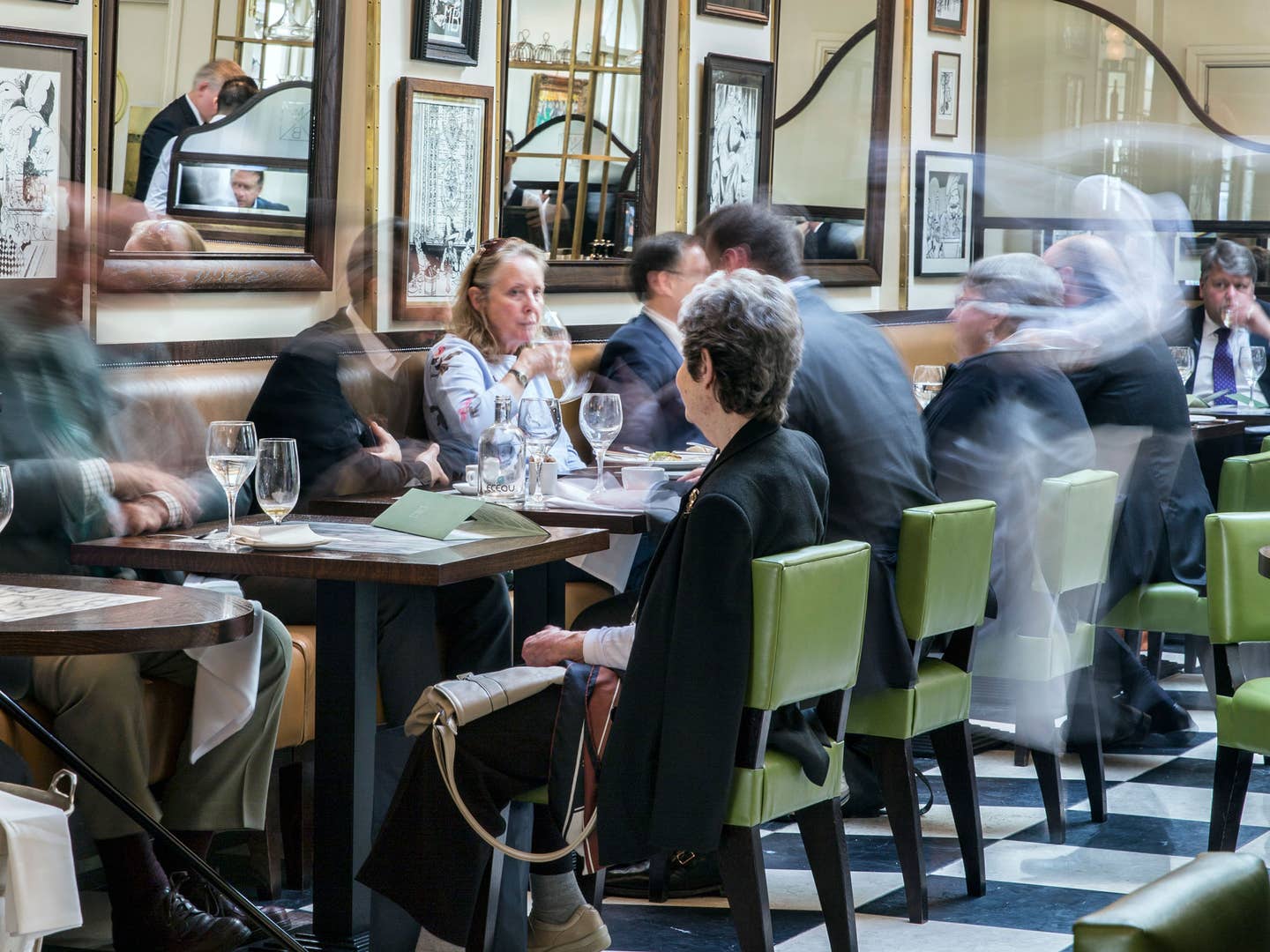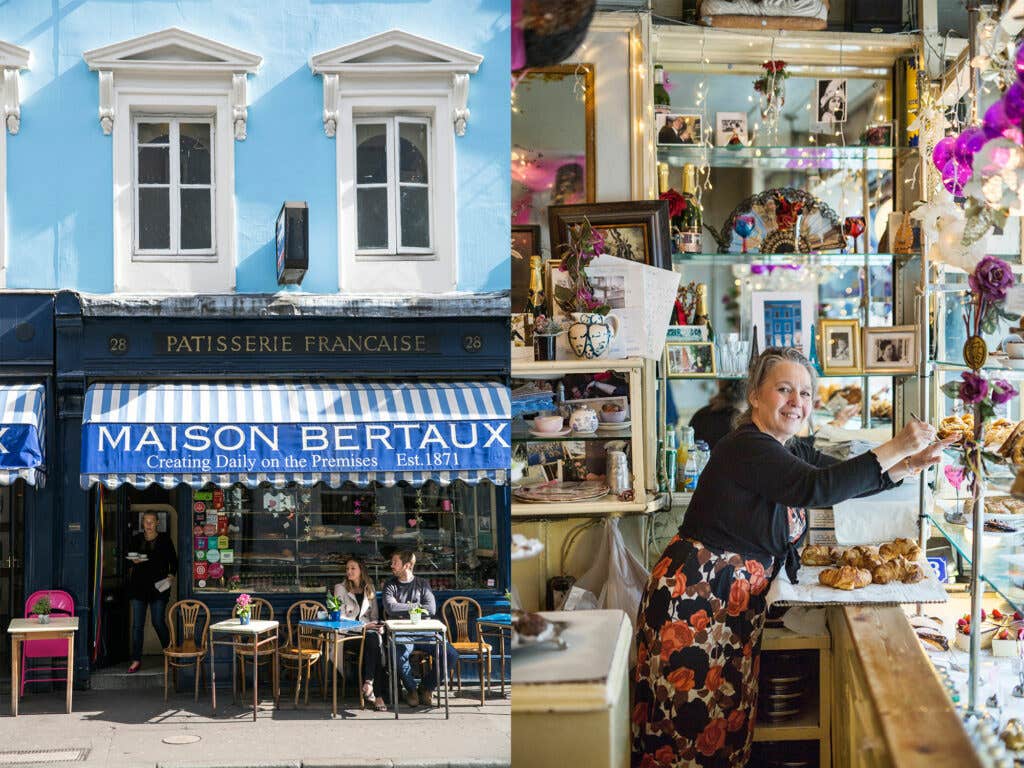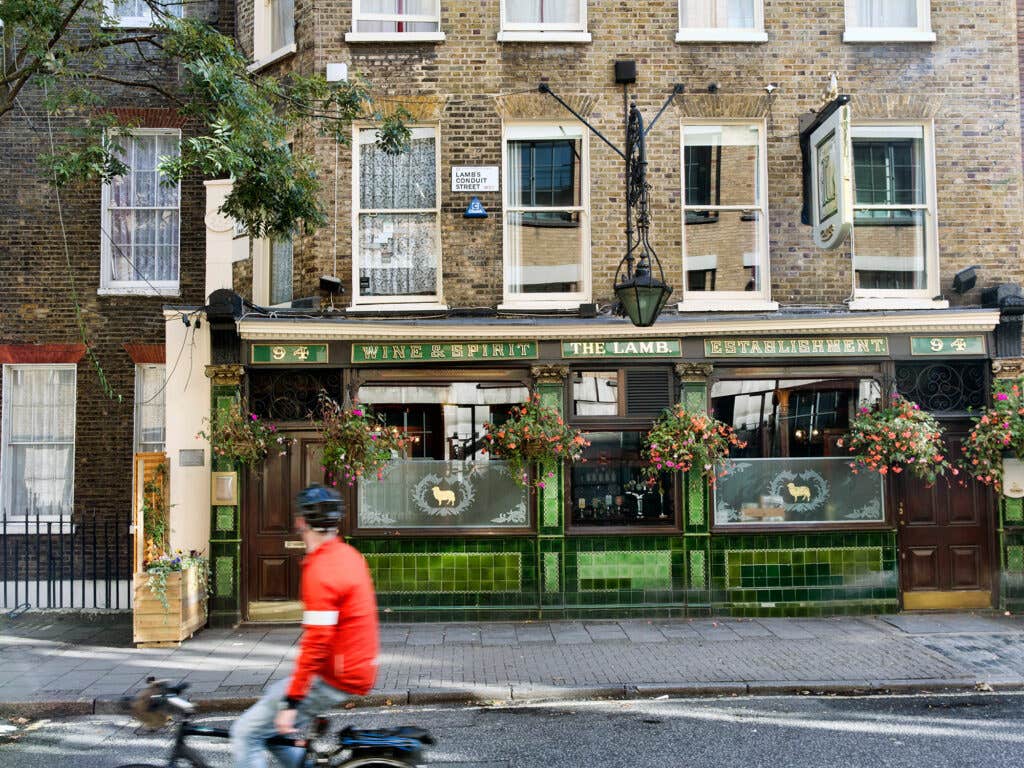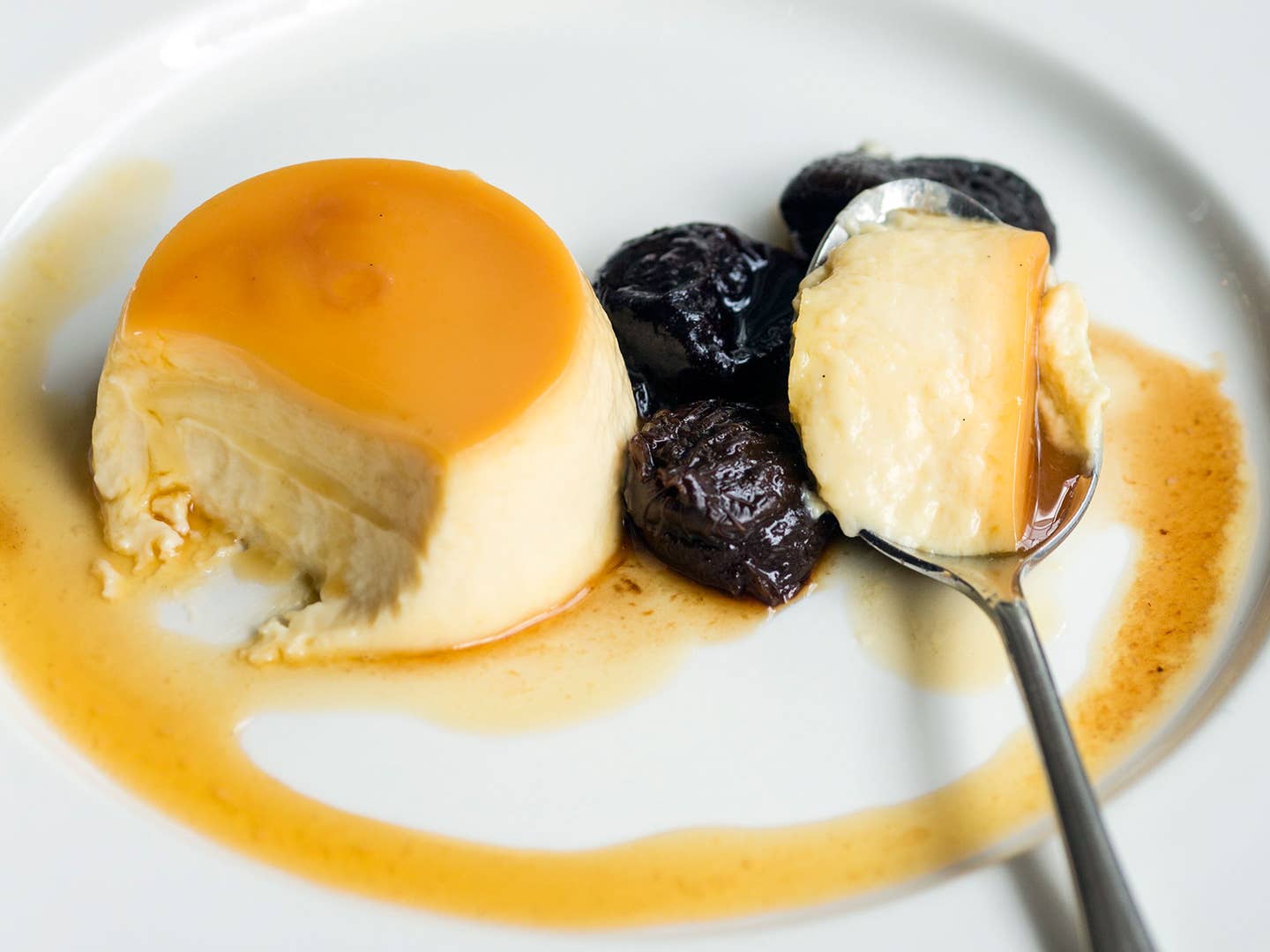
In 1927, Vogue editor Dorothy Todd invited her friend Virginia Woolf to a small lunch. The writer, it was well known, hated noisy, crowded restaurants, and so Todd arranged to throw the luncheon at the private flat of Marcel Boulestin, a French writer and boutique owner. As a parade of tempting dishes appeared before the guests, it was suggested that Boulestin open a small restaurant.
"By the time that the pudding and coffee had arrived," writes Jans Ondaatje Rolls, in her Bloomsbury Cookbook, "finance had been secured." And the rest, as they invariably say, is history.
Although the restaurant Boulestin became a hit (and the proprietor himself one of the first celebrity chefs), it maintained a level of intimate conviviality that allowed even Virginia Woolf to feel comfortable. As a result, the restaurant was one of the clubhouses where the haute-bohemian group of writers, artists, and intellectuals known as the Bloomsbury Group ate, talked, and passed into legend. The restaurant itself was a bastion of the London dining scene until it faded from favor and ultimately died in 1994. But when a historically respectful Boulestin reboot opened a couple of years ago in St James's, a short walk from the original, and included on its menu dishes from the 1927 version, those of us fascinated by this slice of literary history had a chance to taste the past.
As I learned in Rolls' comprehensive study, food was integral to Bloomsbury: cocoa and conversation in the evenings, recipes exchanged in letters, and lusty country banquets that thumbed their nose at propriety and didn't spare the garlic. All that talking and talking needed fuel. And it had to happen somewhere. And so, I booked a table.
Ever since I first read To the Lighthouse as a teenager, I've been a closet fangirl of the worst kind—the sort that wants to be friends with the writer, who feels understood by her, who is comforted by her private letters and fascinated by accounts of her life and circle and reads them with an addict's avidity. I may or may not own a Virginia Woolf finger puppet.

Over the years, I've dutifully visited the shrines of Bloomsbury, well preserved even by English standards. I've been to the Woolfs' East Sussex home, Monk's House. And to nearby Charleston, where her sister Vanessa lived. I've looked at images of Lytton Strachey and John Maynard Keynes and Woolf grouped together at the National Portrait Gallery. And I've walked through Bloomsbury and Fitzrovia, marveling at the riot of historical Blue Plaques in Russell and Bedford and Fitzroy squares. And yet, I've found that walking in their steps like an Arthur Murray student didn't make me feel any closer to my literary crushes.
Alas, so much of literary fandom can involve ignoring what doesn't fit: not just unsavory facts about a beloved author's personal life or private views, but also the NO FLASH signs and velvet ropes in a historic home, the crowds of fellow fans. Add to all that the fact that those in the legendary Bloomsbury Group wouldn't have wanted me in their homes. Part of their mystique, after all, was their exclusivity. Even if, magically, I somehow came into their orbit, they probably would have had absolutely nothing to do with me, and I wouldn't have been able to hack it if I had been invited to one of their flats in Gordon Square; they would have found me boring and conventional and unlettered, and probably uptight when it came down to it. (Or middle class, if it really, really came down to it.) So, during this particular visit, my plan was to ignore the impulse to conjure them up entirely, just as they would have ignored me. No, this time I'd simply have a bite to eat.
It's late lunchtime. The sun is streaming in through French doors. I'm a little nervous, not least because I don't want my husband to see the gauche teenager in me who wants to impress a bunch of ghosts. Also, the restaurateur behind the homage, Joel Kissin, is known for glossy and sceney London hot spots of a decidedly newer vintage. Would it feel like a fawning, naff reenactment? Or, just as bad, a sterile modern restaurant with a few discordant nods to the past?
It is neither. In a word, it is comfortable. Boulestin's airy interior is vaguely 1920s, vaguely period, it's true. But the customers are not there to worship at the altar of Woolfiana, or history of any kind. Rather, they are there to eat: businessmen at lunch, couples in the garden, all generating a pleasant buzz of conversation.
Boulestin is just a few minutes' walk from the eponymous neighborhood where members of the Bloomsbury famously "lived in squares, painted in circles, and loved in triangles." Central London has a number of perfectly preserved, vibrant institutions—you can wash down plump, coarse-grained sausages and a puddle of dark onion gravy with a pint at the Lamb pub, located in a landmarked building, shop for raised pies at Fortnum's as Woolf did, have a cup of tea and an éclair at Maison Bertaux, like the artists of the group did in the afternoons—but Boulestin's menu is perhaps the most literal, and deliberate, homage to that period.

What is perhaps both notable and reassuring about the dense menu is that there is nothing to distinguish the "historic" dishes from those chef Elliot Spurdle has created himself, like roast mackerel with fennel or house-smoked breast of wood pigeon. There's no "signature dish," no origin stories. If you should happen to order a jambon persillé (jellied ham terrine) or an oeuf en gelée or a fish soup, yes, you are eating dishes that Virginia Woolf may well have eaten. But is that the point?
The oeuf en gelée arrives, a glistening oval of aspic. My spoon unleashes a river of almost shockingly vibrant yolk, sharp with tarragon. That jambon persillé is as perfect a rendition as I've ever tasted, poised between tremulous and firm, somehow delicate and subtle and hearty all at once, complemented by a small haystack of mustardy celery remoulade and tart gherkins. When fish soup comes, it is rich with brine and garlicky rouille.
Liver and bacon is served on a layer of confit potatoes and meltingly soft onion. And boudin noir, napped with soft caramelized apple, is like the most divine baby food ever created. By the time the tender sauternes custard and its boozy prunes arrive, my husband and I are weak with delight. And when the warm madeleines show up, beyond words. It is pure pleasure in eating. I find that there are silly tears in my eyes, of relief, and of happiness.
Yes, Virginia Woolf may well have eaten all this, found it, perhaps, as delicious as I do. But it is not just in the flavors that I feel a connection; it is in the simple act of eating something good, with good company, being in that moment happy and well. And, perhaps, appreciating how easy it is to hear each other.
The Bloomsbury Group's London
Where to Stay
Hazlitt's
Quirky, funky, and dripping with character, Hazlitt's is made from a row of Georgian townhouses. No two rooms are alike—heck, no two floorboards are alike. But make no mistake, this is very much a modern boutique hotel, with all the amenities that implies.
6 Frith Street
Hotel Russell
Located in the heart of literary Bloomsbury, Hotel Russell is a dignified Victorian behemoth with comfortable rooms, plenty of history, and a resident bronze dragon. It was one of the first hotels in London said to provide that most modern of amenities, en suite bathrooms.
1–8 Russell Square
Morton Hotel
This boutique hotel's finishes—the art on the walls, the bespoke wallpaper, even the pillowcases—are inspired by the Bloomsbury Group. And, yes, there is a library where you can get a good cup of tea.
2 Woburn Place
Where to Shop
Fortnum & Mason
Fortnum's legendary food hall, where the residents of Gordon Square might well have shopped for imported olive oil, is a feast for the eyes and palate: The piles of candied fruits, tins of foie gras, and raised pies make for a food-lover's dreamscape.
181 Piccadilly
Hatchards
Mrs. Dalloway herself window-shopped at London's oldest bookseller, and it's still one of the most pleasant spots to browse for a good read.
187 Piccadilly;
Liberty London
You'll find hundreds of the firm's beloved Liberty Print fabrics at this boutique department store, along with a refined and well-edited selection of new designer pieces.
Corner of Great Marlborough and Kingly streets
Where to Eat & Drink
Gordon's Wine Bar
One-hundred-twenty-five years and going strong, London's oldest wine bar is a subterranean warren of dimly lit nooks. Pull up a chair, order a bottle, and settle in for a wholly enjoyable evening.
47 Villiers Street
Boulestin
What might be called Boulestin 2.0—an imaginative reboot of a London institution with Bloomsbury Group roots—opened in 2013. The decor and the classic French menu nod to the restaurant's storied history, but chef Elliot Spurdle's dishes are vibrant and fresh.
5 St James's Street
The Lamb
Built in the 1720s, this stunning pub (pictured above) has played host to generations of intellectuals and hungry Londoners, all protected by frosted "snob screens" to protect diners from unwanted eyes. Well-made British classics like Toad in the Hole, fish pie, and a Ploughman's lunch match perfectly with a pint of bitter.
94 Lamb's Conduit Street
Maison Bertaux
A Soho institution frequented by the Group, this quirky patisserie was founded in 1871 by French émigrés. It retains a bohemian charm and eccentric jauntiness—and the tempting pastries, from cheesecakes and éclairs to mince pies and marzipan fruits, taste as good as they look. Settle at a table with a slice of cake, a cup of tea, and your favorite book for a perfect afternoon.
8 Greek Street
Keep Reading
Continue to Next Story











